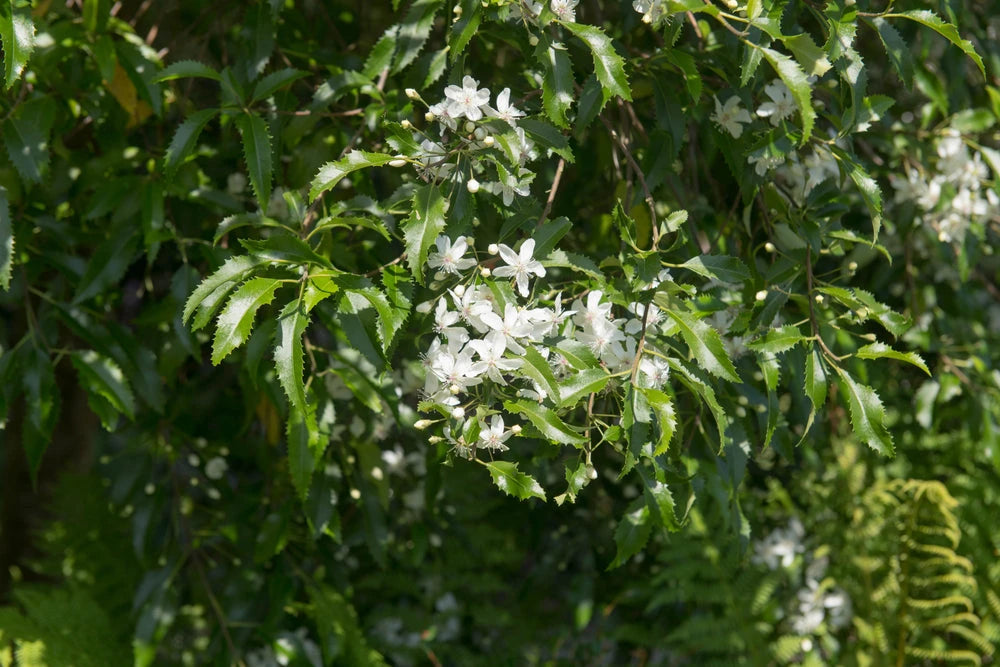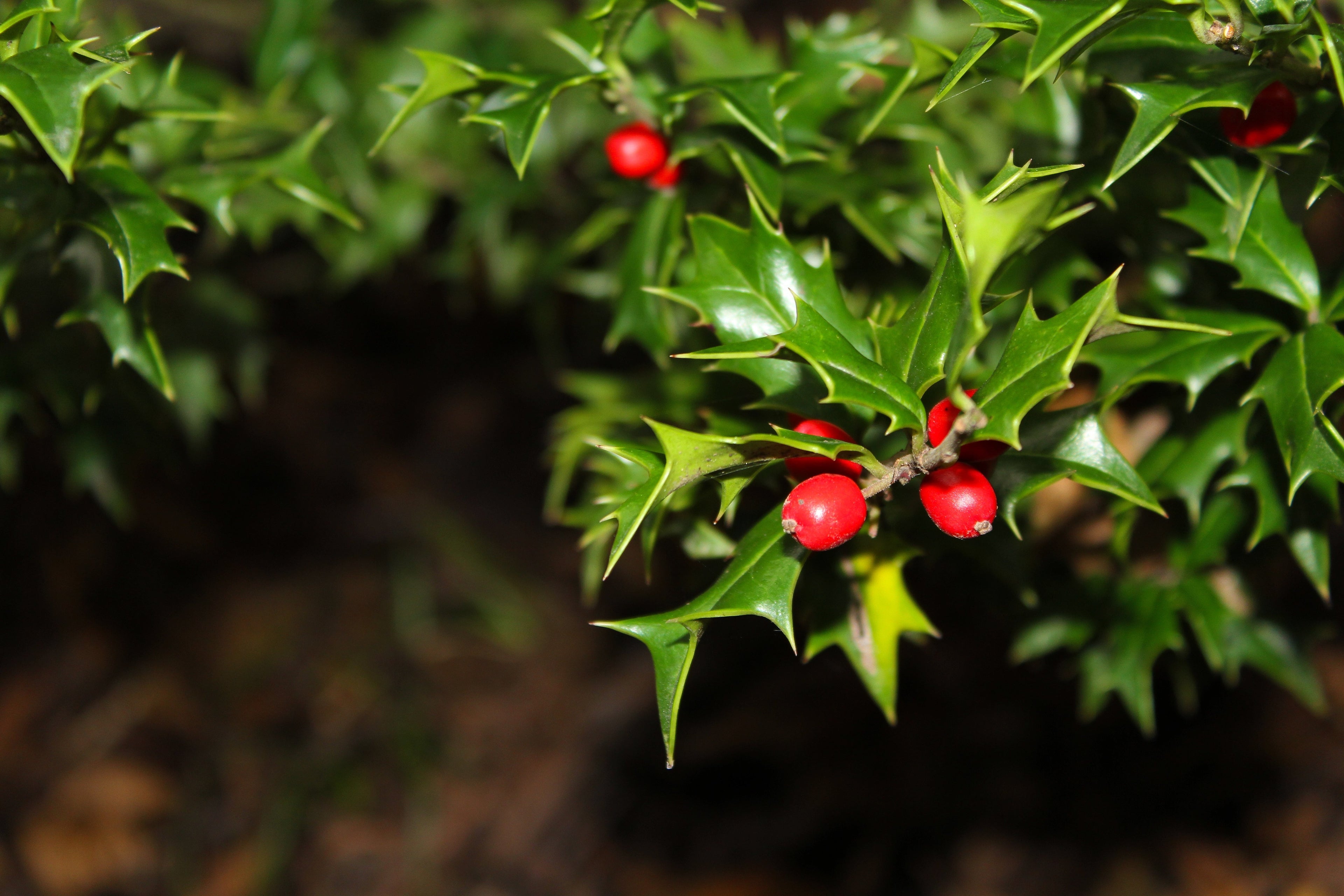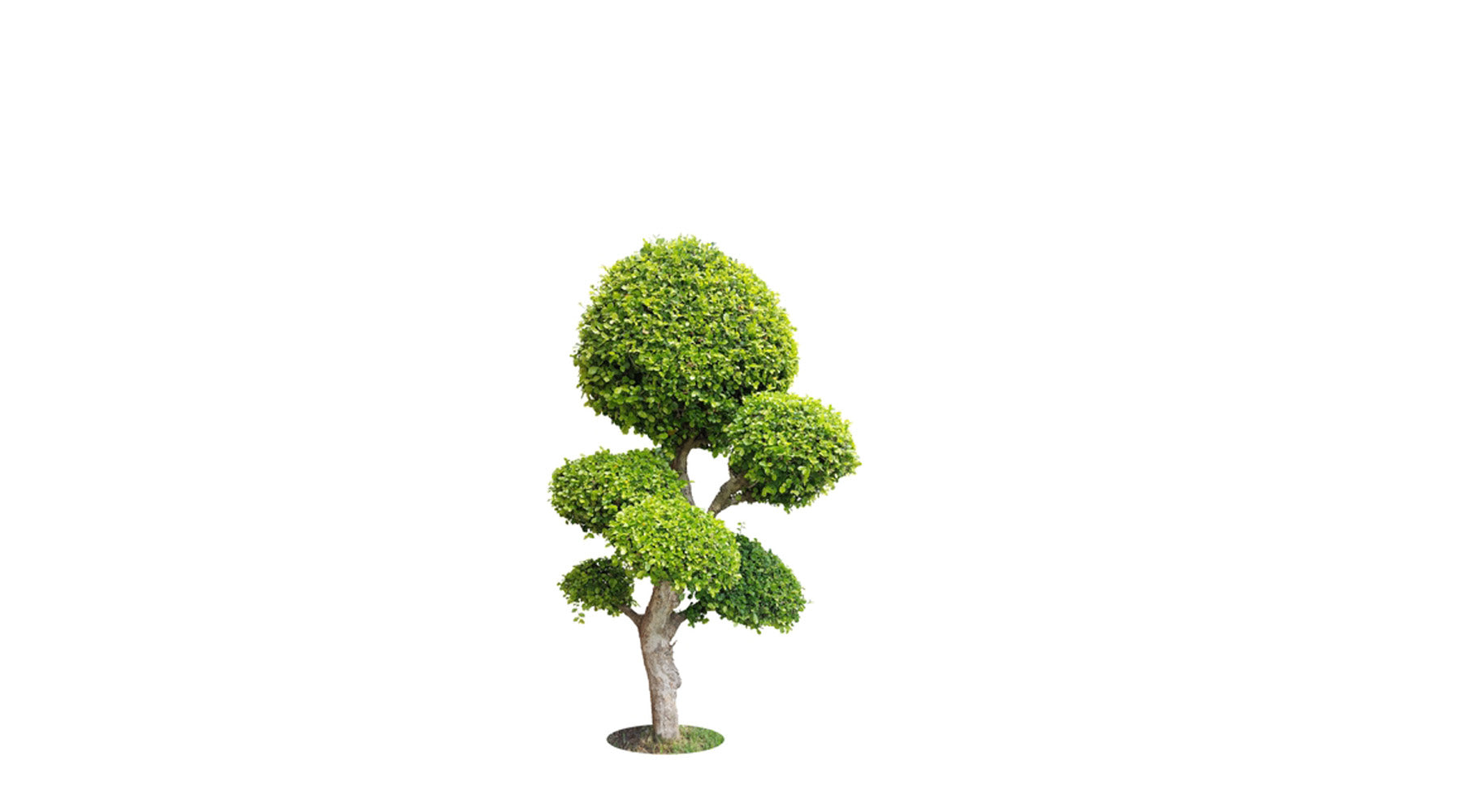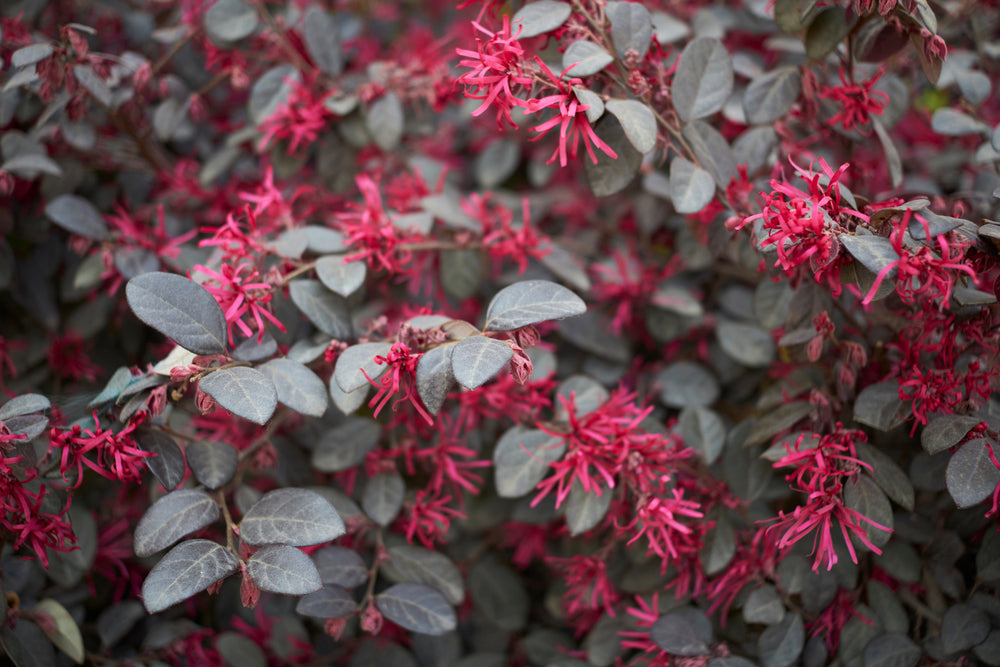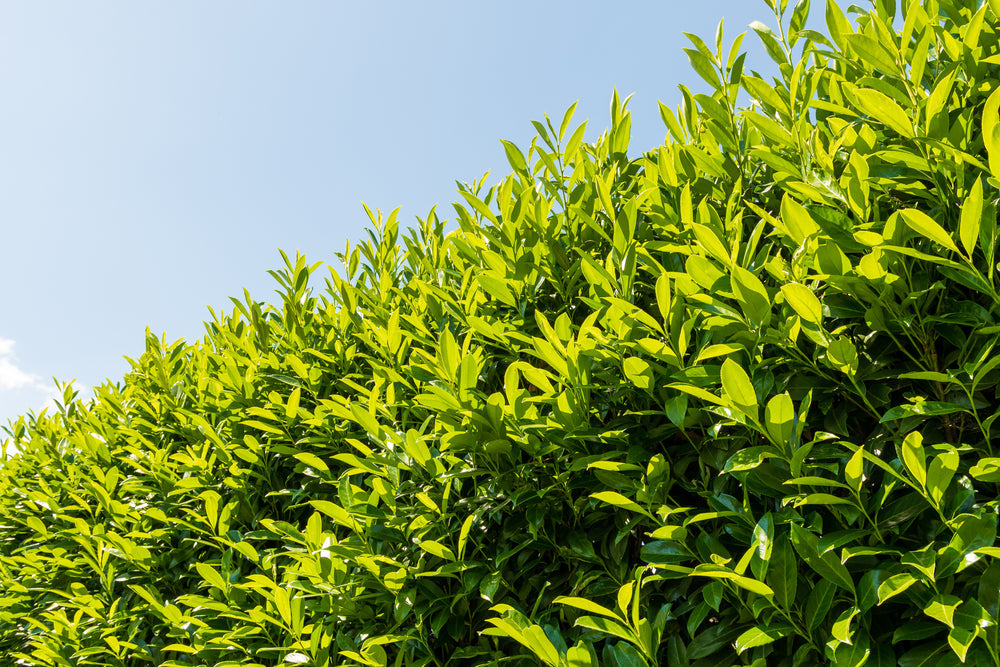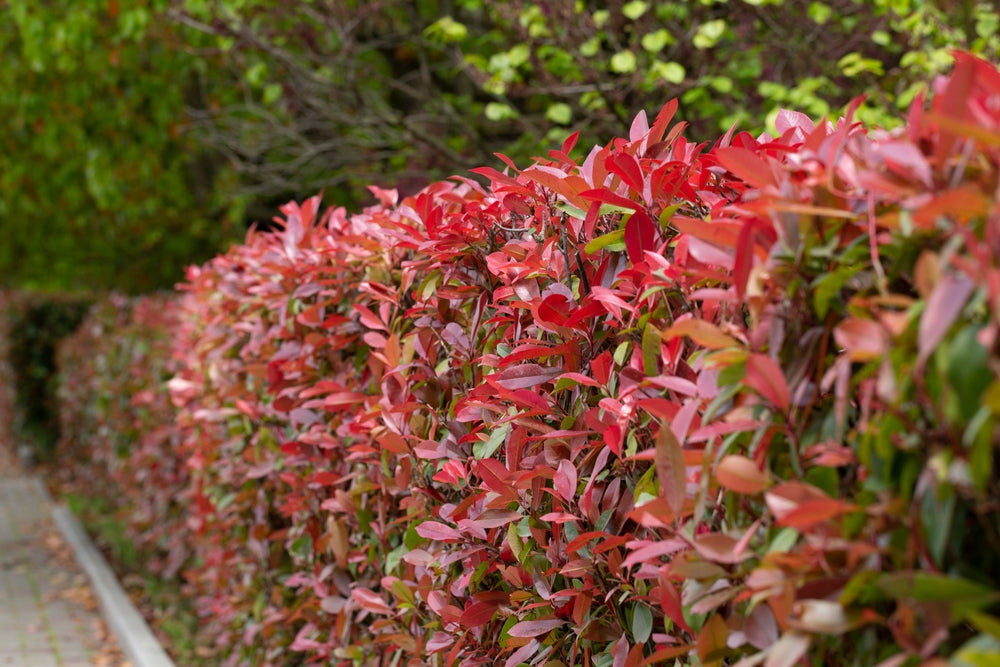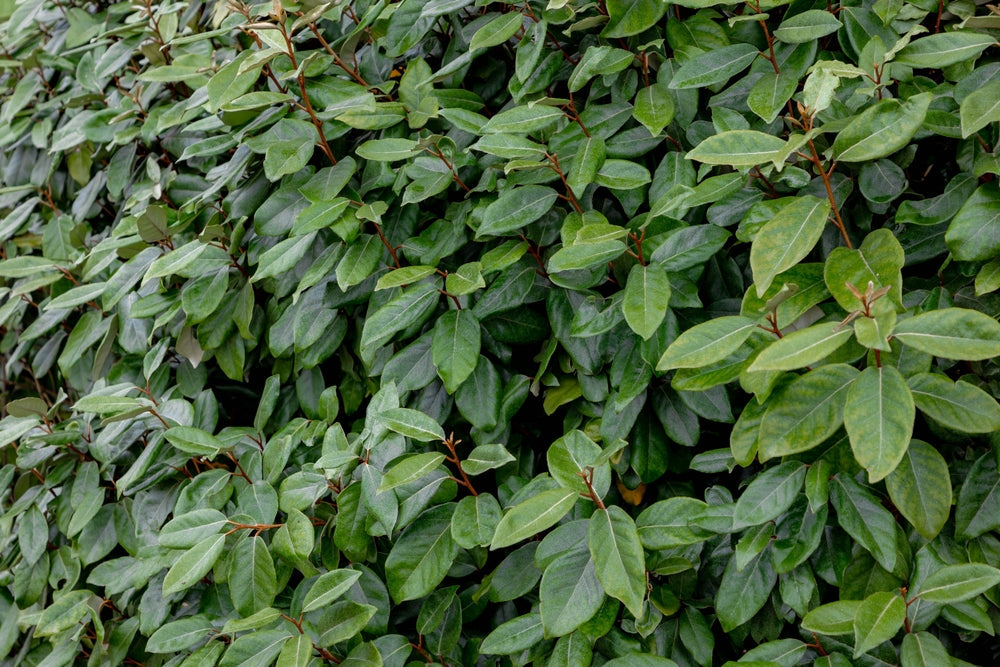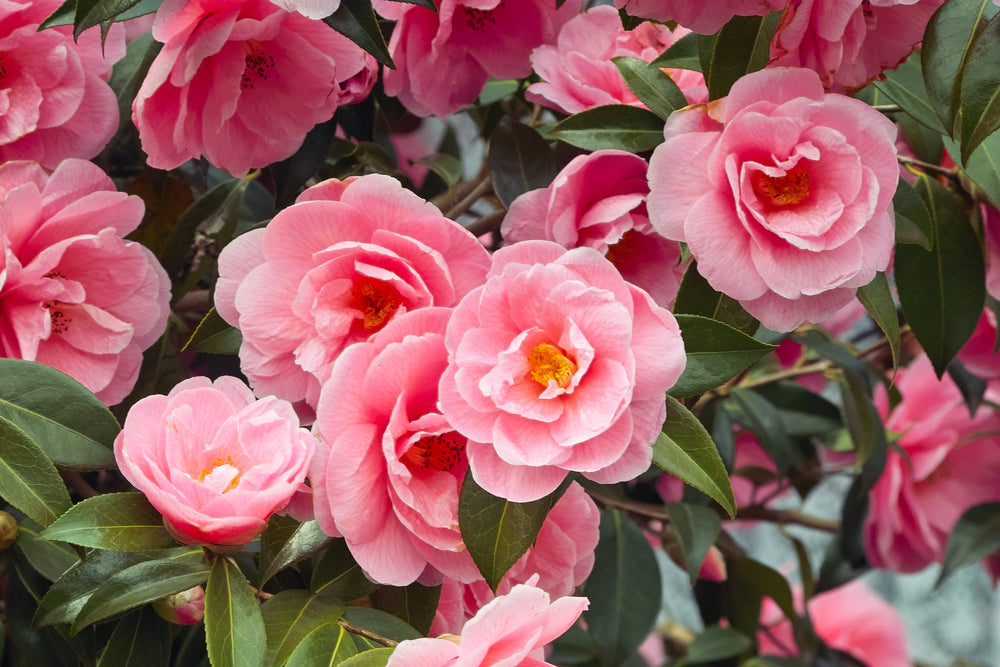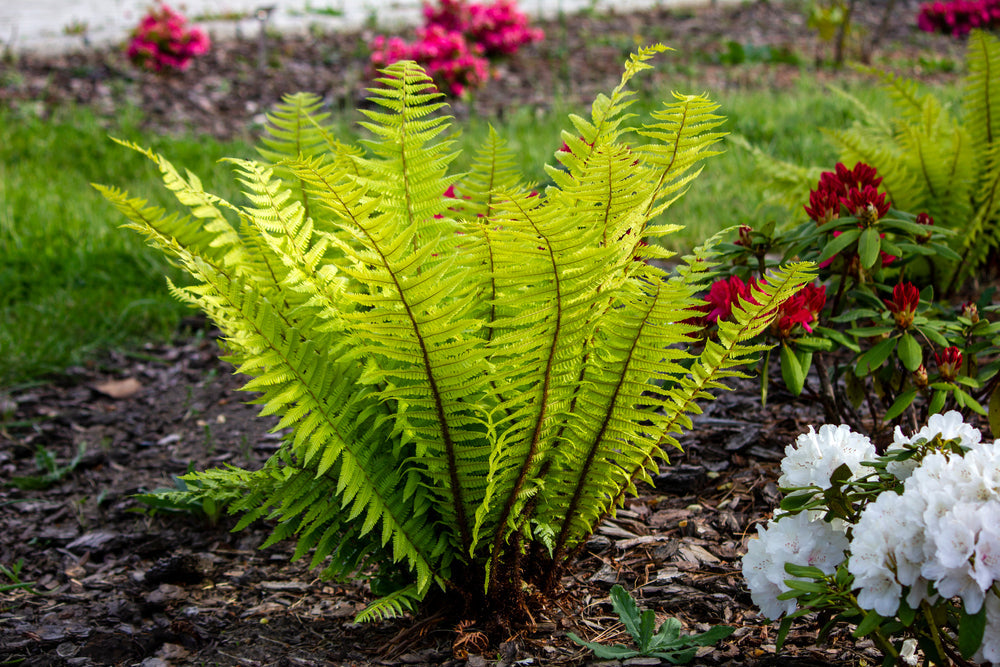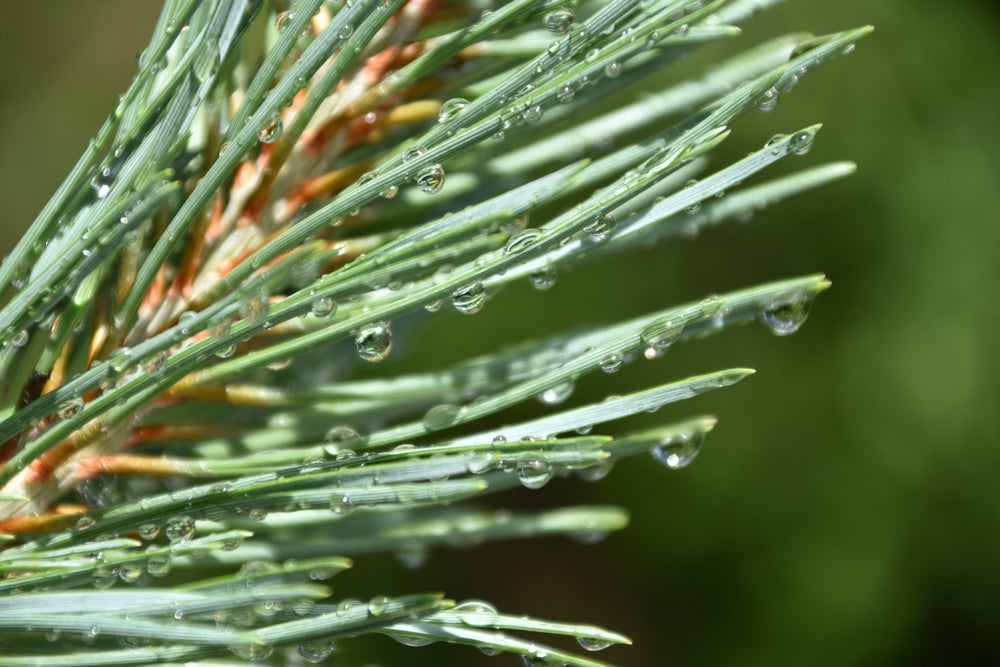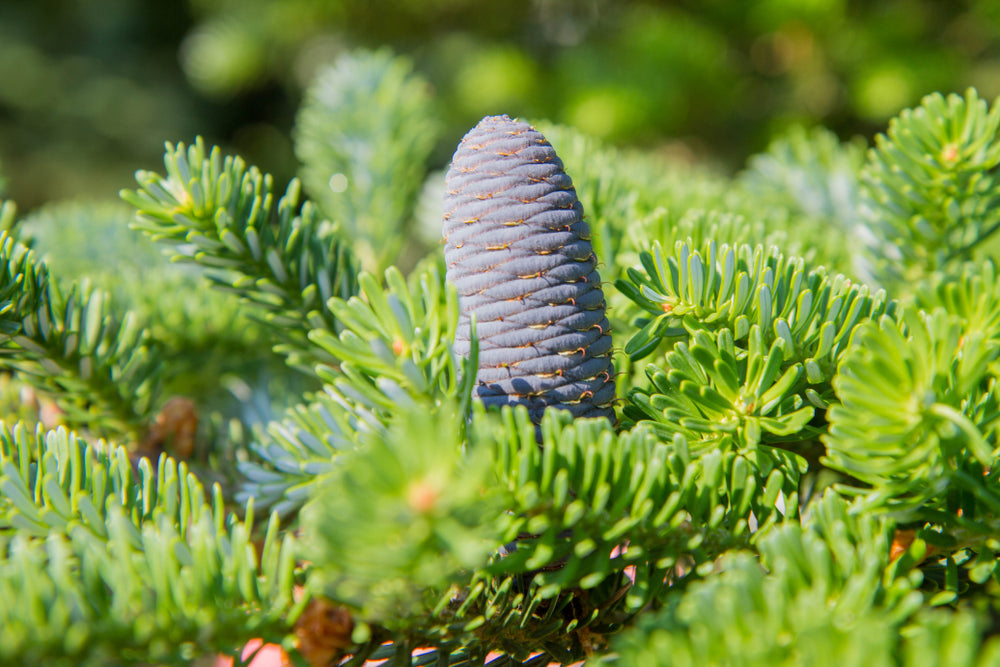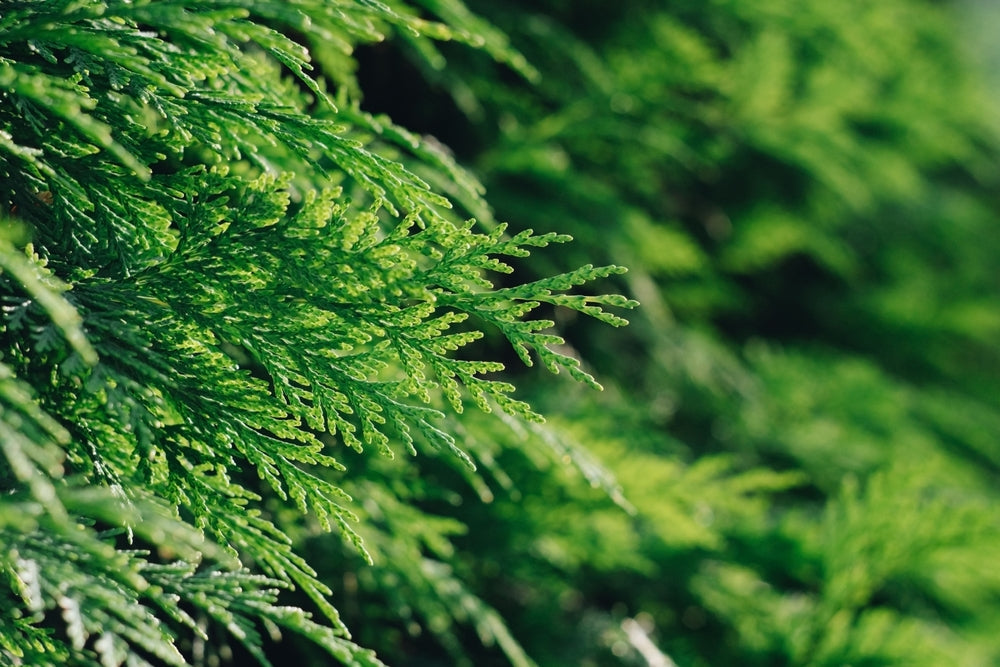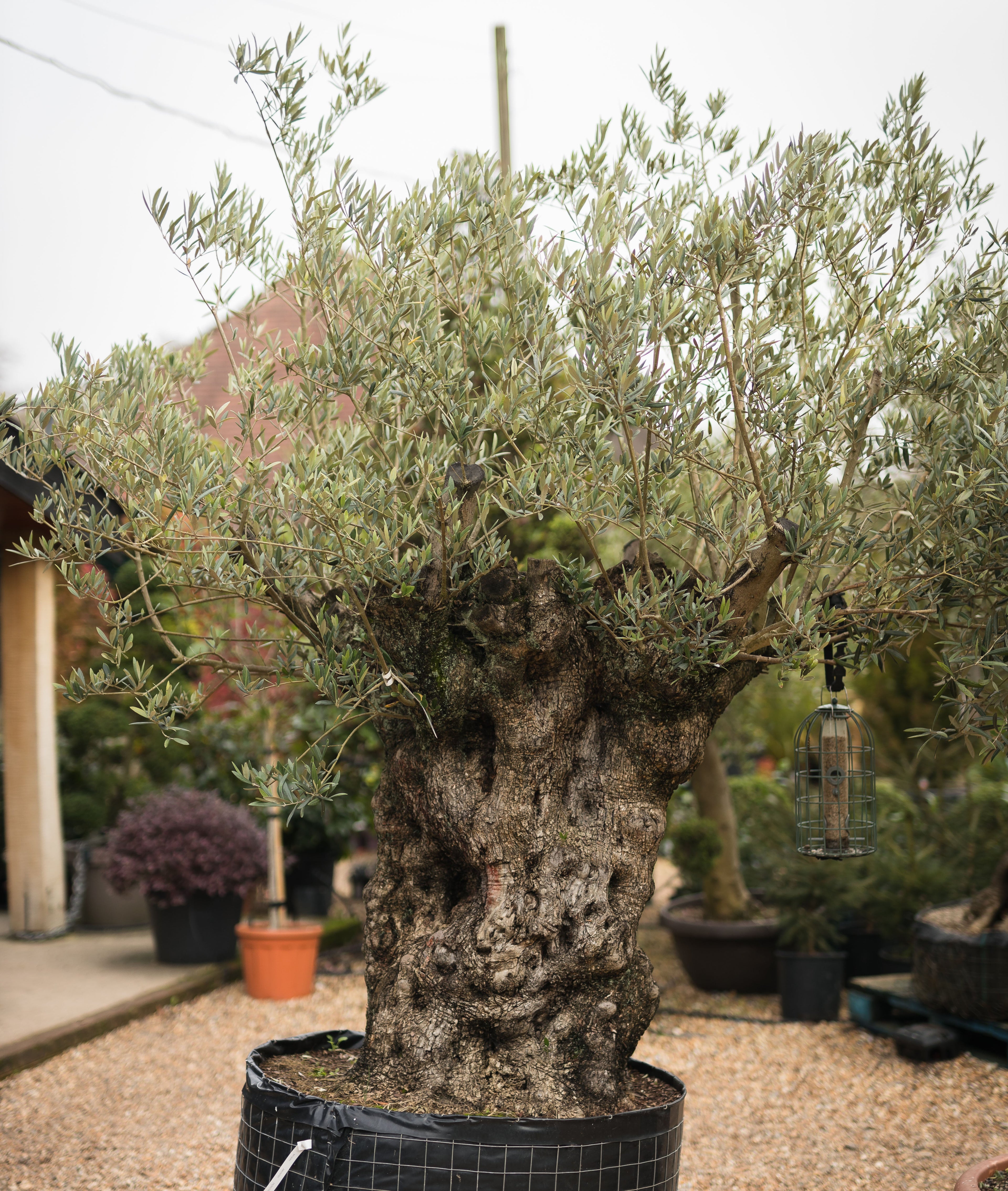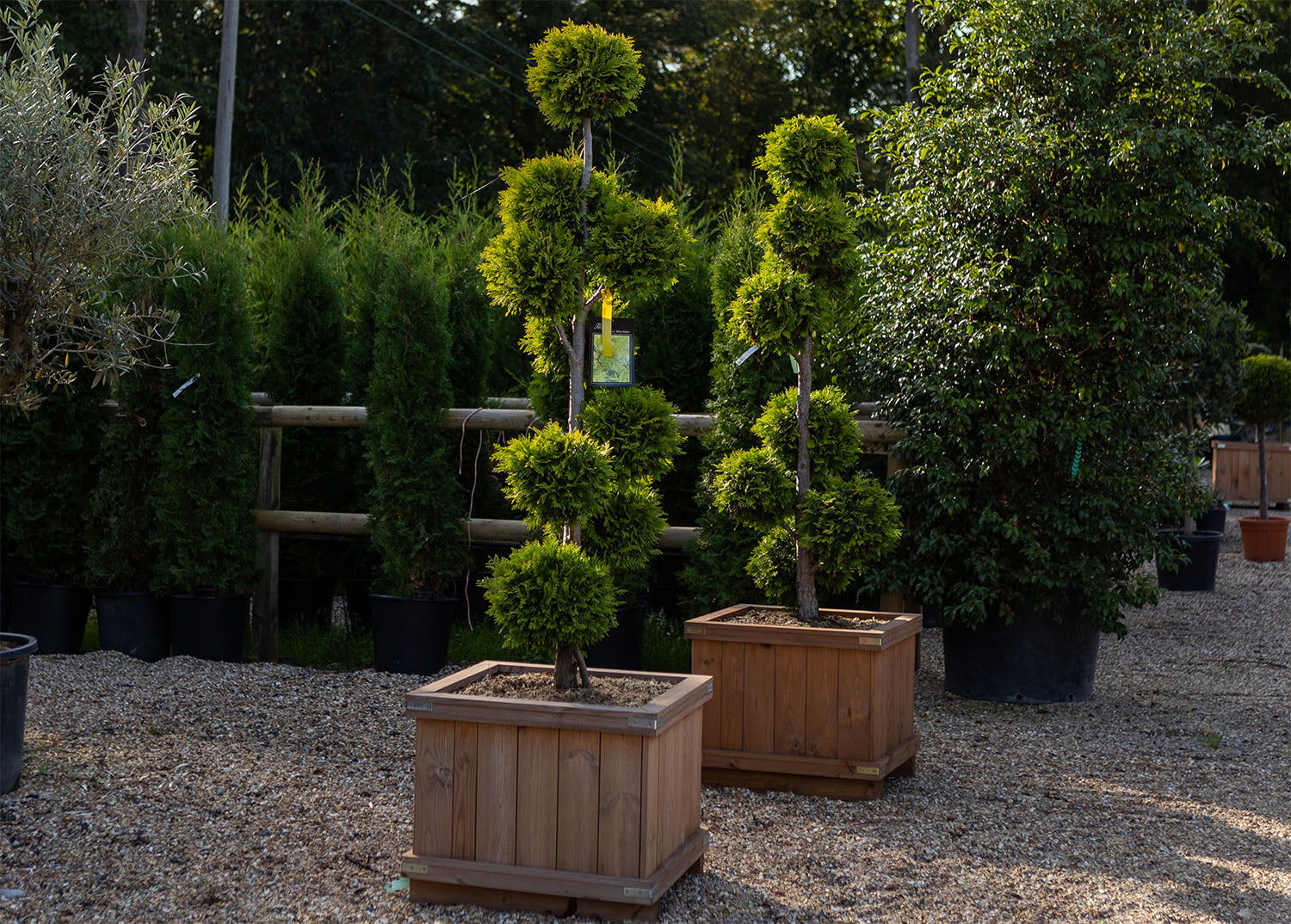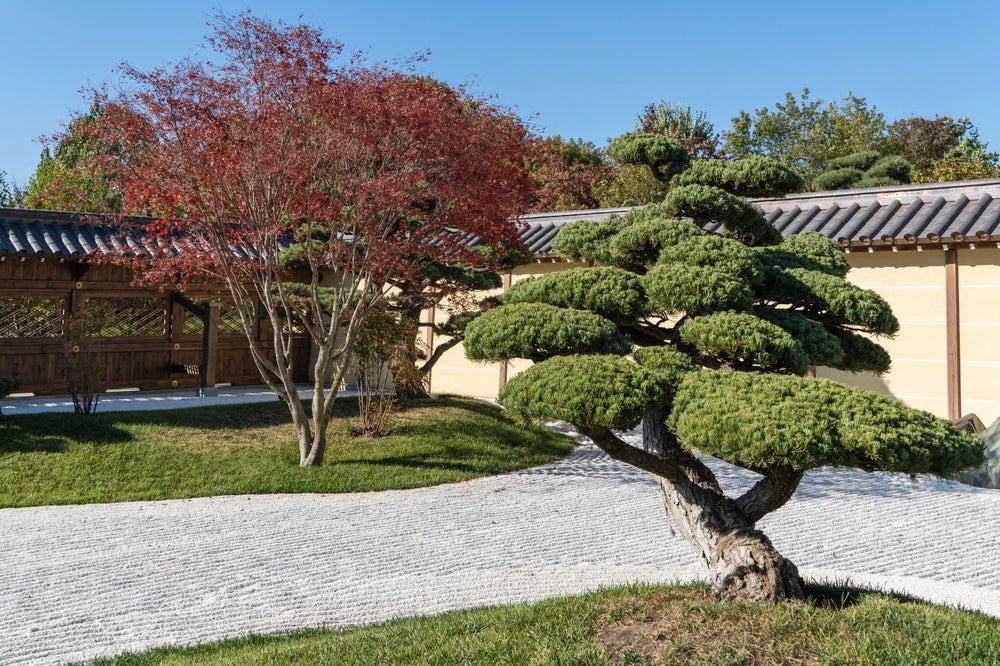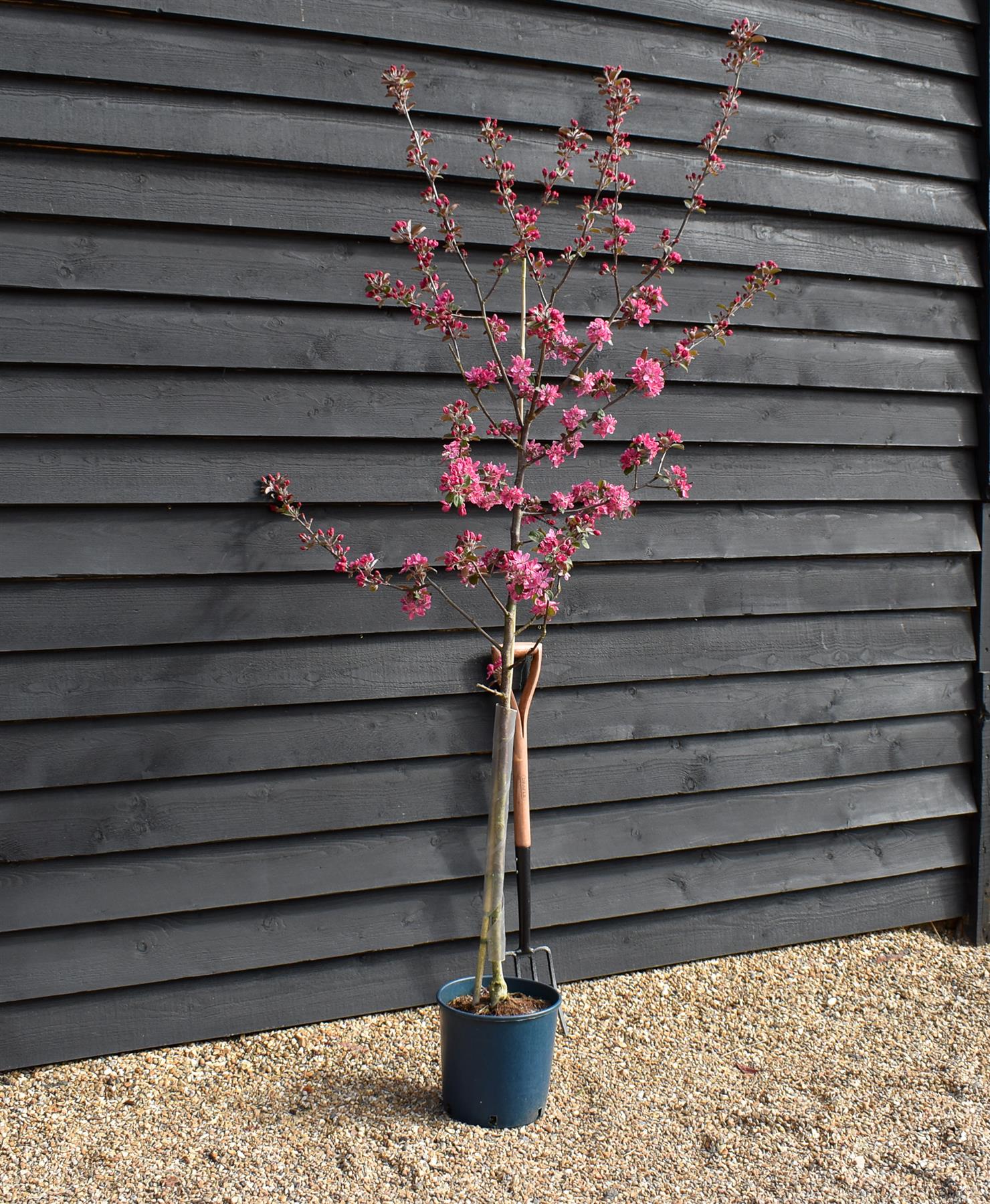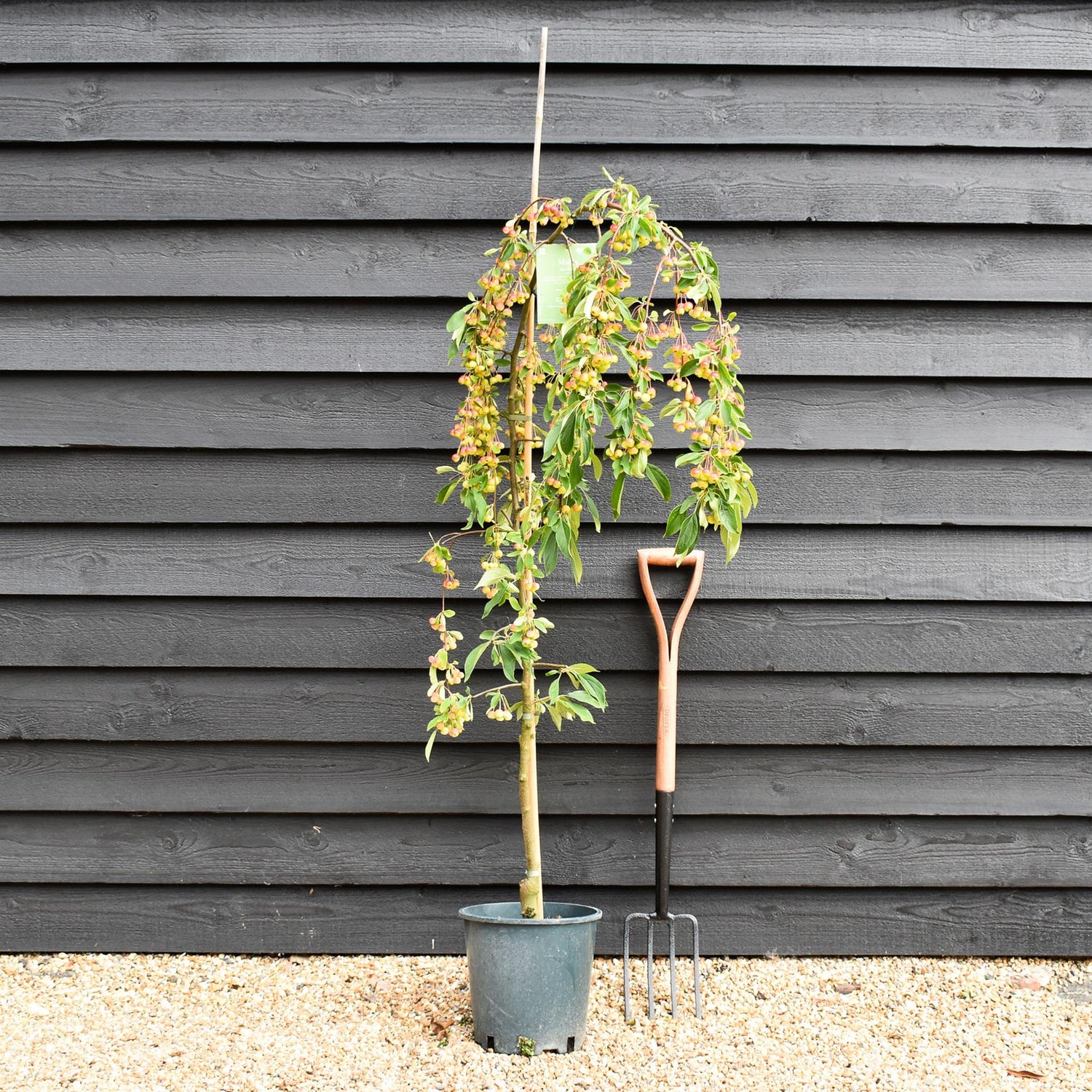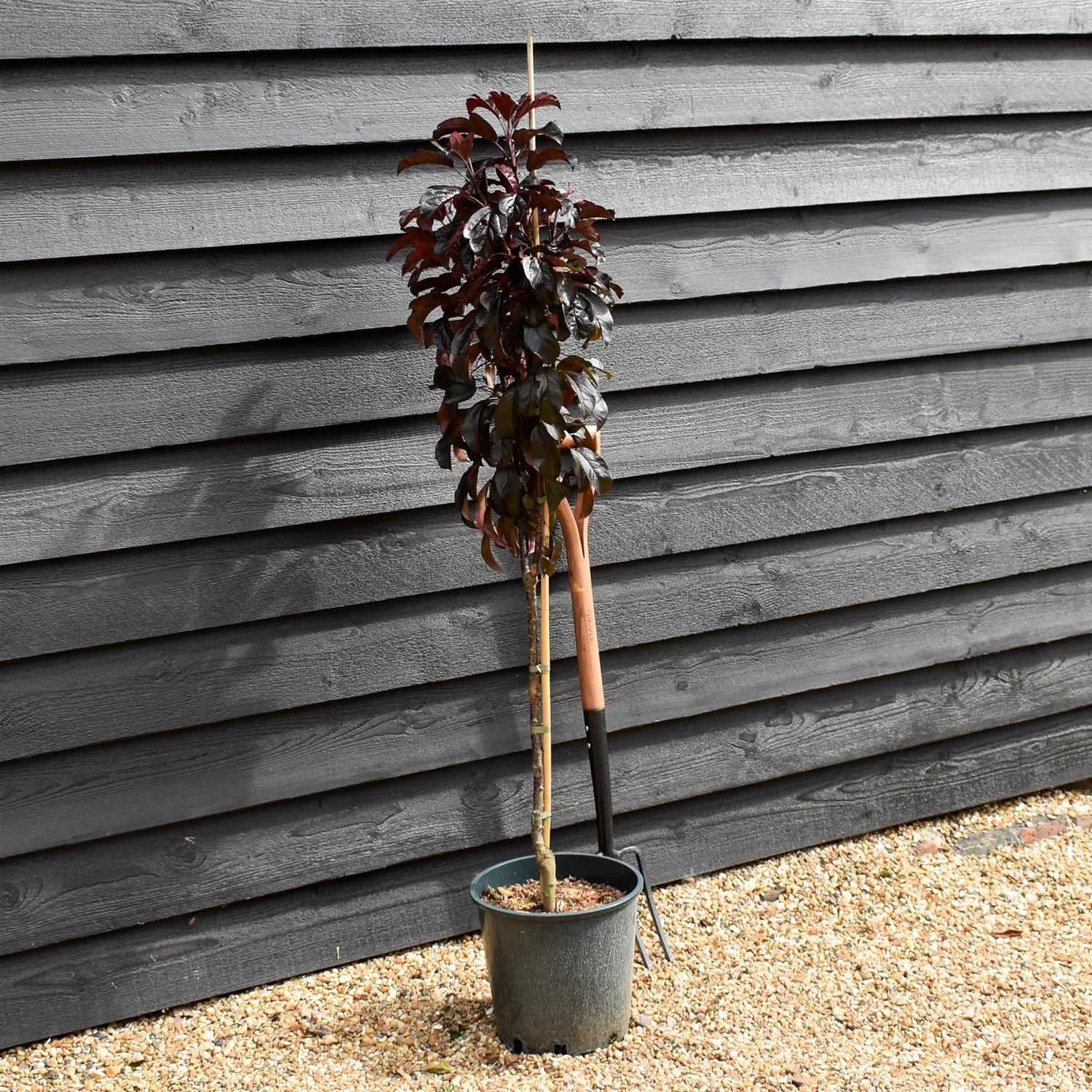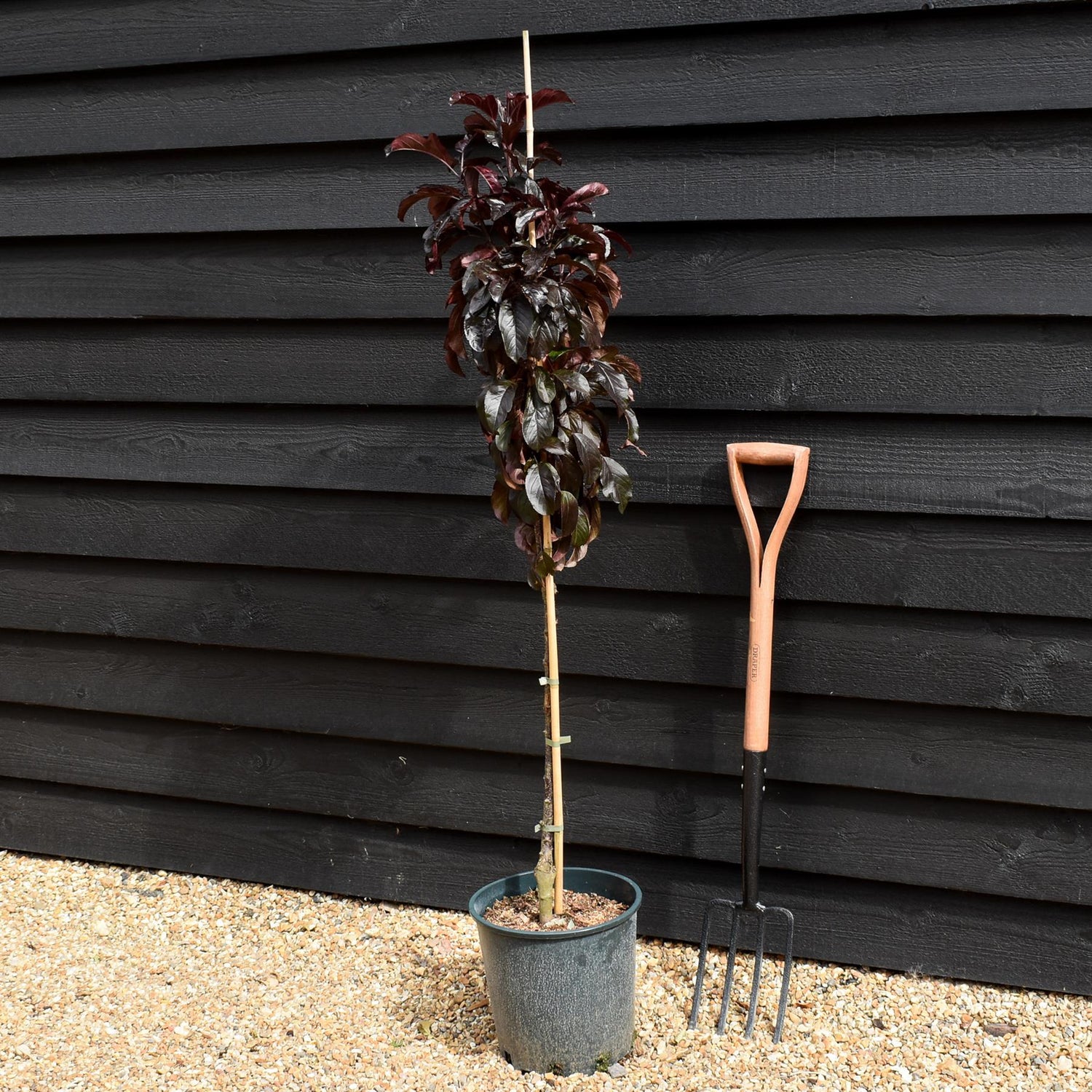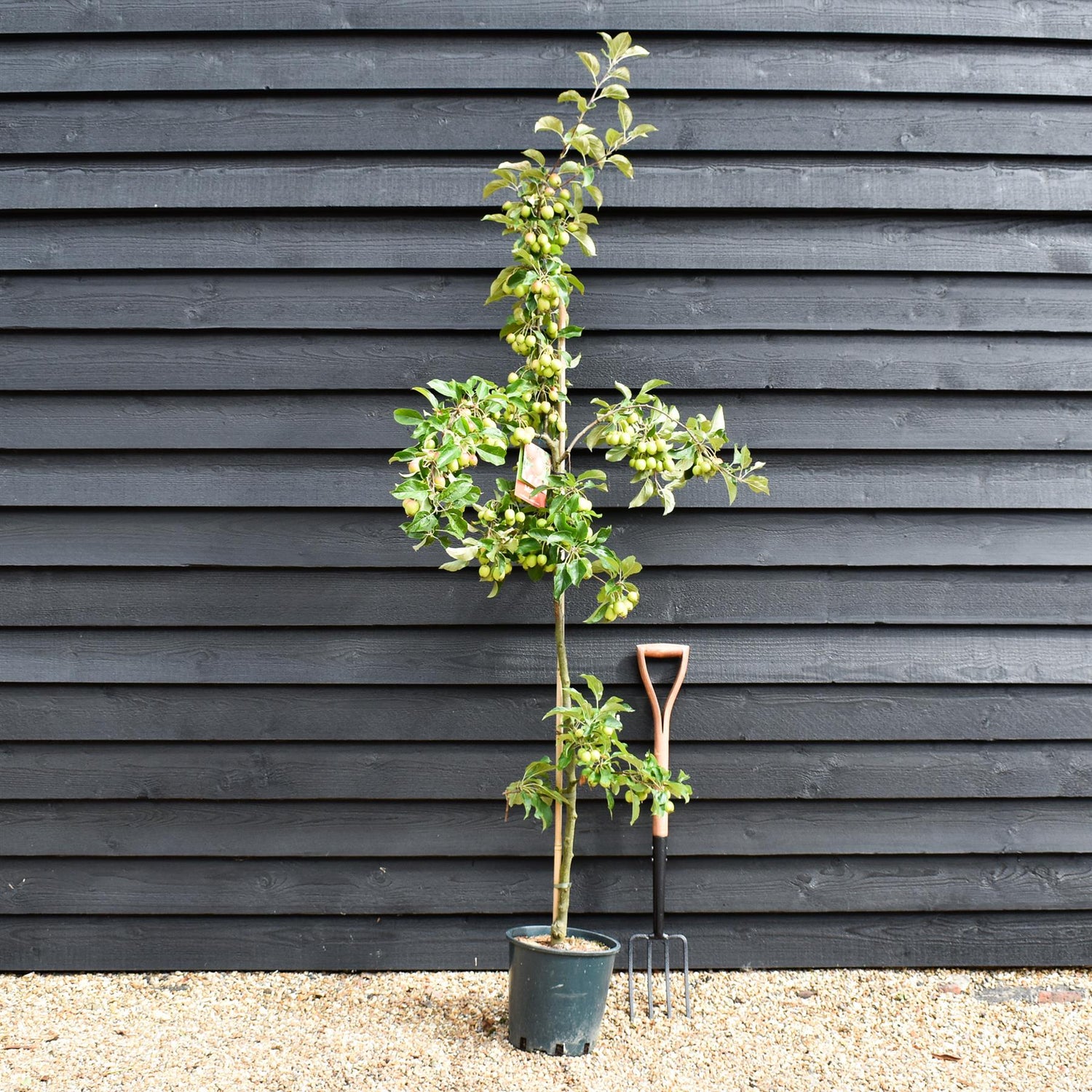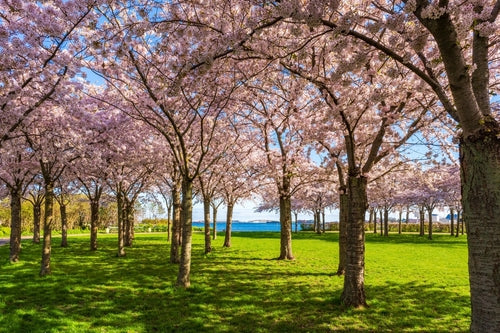33 products
33 products
Sort by:
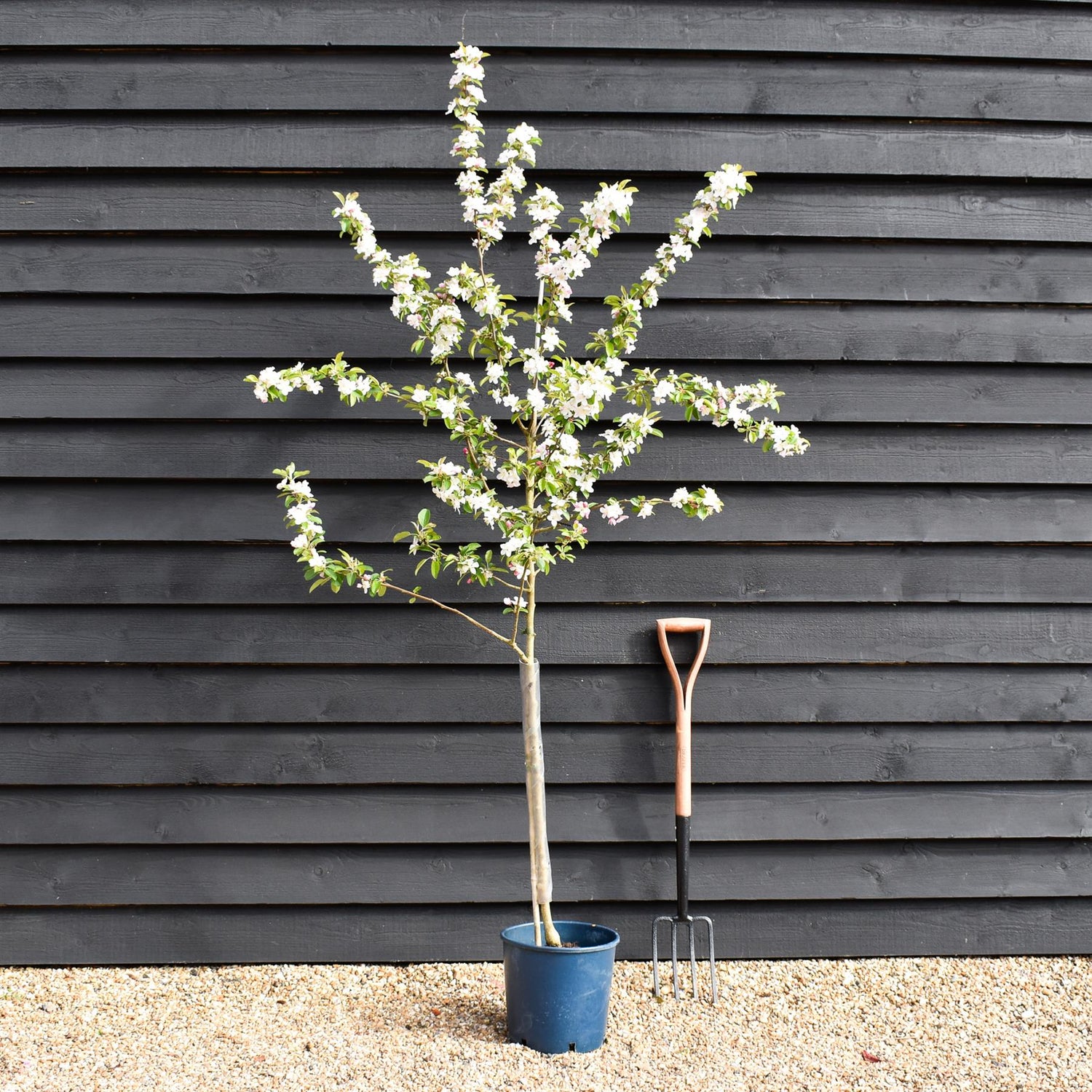
Crab apple | Malus Yellow Siberian - 160-180cm - 12lt
£78.00
Unit price perCrab apple | Malus Yellow Siberian - 160-180cm - 12lt
£78.00
Unit price perMalus 'Yellow Siberian' is a distinctive variety of crabapple tree notable for its hardiness and ornamental value. Native to Siberia, it is resilient and adapts well to diverse climates and soil conditions, making it an excellent choice for a wide range of landscapes. This deciduous tree flourishes in full sun, offering optimal flowering and fruit production in well-drained soils.
In spring, the Malus 'Yellow Siberian' captivates with abundant, fragrant white blossoms that attract pollinators, contributing to the local ecosystem. The lush, green foliage creates a dense canopy, providing ample shade during the summer months.
The tree's ornamental appeal continues into fall when it produces vibrant yellow crabapples. These fruits are small and typically not favored for human consumption but serve as a valuable food source for birds and other wildlife throughout the colder months. The striking yellow fruit contrasts beautifully with the autumn foliage, creating a visual spectacle in any garden.
In addition to its aesthetic appeal, Malus 'Yellow Siberian' is prized for its disease resistance, notably to apple scab, making it a relatively low-maintenance option for gardeners. Its robust nature, combined with its ornamental features, makes the Yellow Siberian a popular choice among both novice and experienced gardeners.

Malus Neville Copeman | Purple Crab Apple Tree, Clear Stem - 200-250cm, 10lt
£79.00
Unit price perMalus Neville Copeman | Purple Crab Apple Tree, Clear Stem - 200-250cm, 10lt
£79.00
Unit price perMalus Crimson Cascade | Purple Weeping Crab Apple Tree - 200-250cm, 10lt
£79.00
Unit price perMalus Crimson Cascade | Purple Weeping Crab Apple Tree - 200-250cm, 10lt
£79.00
Unit price perCrab apple | Malus 'Butterball' - 160-200cm - 12lt
£79.00
Unit price perCrab apple | Malus 'Butterball' - 160-200cm - 12lt
£79.00
Unit price perMalus 'Butterball', a highly ornamental crab apple tree, is distinguished by its prolific golden-yellow fruit and its breath taking, fragrant spring blossoms. These blossoms are dense, adding a profusion of white to landscapes. The tree is renowned for its decorative appeal, not only offering visual pleasure but also serving as an attraction for various wildlife, especially birds and pollinators, enriching biodiversity within its vicinity.
The fruits of Malus 'Butterball' are small, with a buttery, yellow hue, persisting into winter, adding vibrant winter interest to gardens and landscapes. The presence of these fruits also serves as a substantial food source for wildlife during the colder months when food is scarce.
This variety of crab apple is celebrated for its compact nature, making it a preferred choice for smaller gardens or spaces where larger trees would be impractical. It is also prized for its resilience, withstanding different environmental conditions, thus making it a versatile choice for different landscapes.
Besides its aesthetic and ecological values, Malus 'Butterball' is also appreciated for its low maintenance requirements. It's relatively disease-resistant compared to other crab apple varieties, making it a durable and long-lasting addition to a range of horticultural settings. The tree’s versatility and beauty make it a popular choice among garden enthusiasts and landscape designers alike.
Malus 'Golden Hornet' | Flowering Crab Apple Tree, Clear Stem - 180-220cm, 10lt
£79.00
Unit price perMalus 'Golden Hornet' | Flowering Crab Apple Tree, Clear Stem - 180-220cm, 10lt
£79.00
Unit price perCrab apple | Malus Gorgeous - 160-180cm - 12lt
£80.00
Unit price perCrab apple | Malus Gorgeous - 160-180cm - 12lt
£80.00
Unit price perMalus 'Gorgeous' is a well-loved decorative crabapple tree cherished for its abundant and vibrant pink blossoms that appear in spring. This deciduous tree's stunning springtime display is a spectacle, as the blooms densely populate the branches, offering a breathtaking view and attracting various pollinators, enhancing local biodiversity. The lavish blossoms eventually give way to glossy, small, red fruit, which persist well into winter, providing a continuous supply of food for birds and wildlife, thus contributing to the ecological balance of the garden landscape.
This variety of crabapple stands out for its overall robustness and resilience, often proving to be disease-resistant, making it a favorable choice among garden enthusiasts and landscape designers. The lush green foliage that accompanies the flowers and fruit adds a contrasting backdrop, enriching the visual appeal of the tree throughout the various seasons.
Malus 'Gorgeous' generally achieves a moderate height and spread, making it suitable for gardens of various sizes, including smaller urban gardens. Its ability to adapt to different soil types and conditions contributes to its popularity. The striking aesthetic value and ecological benefits of Malus 'Gorgeous' make it a quintessential element for creating a lively and colorful landscape, particularly in regions that experience a prominent change in seasons.
Malus Direktoer Moerland | Improved Profusion Crab Apple Tree, Clear Stem - Height 190-220cm, 10lt
£82.00
Unit price perMalus Direktoer Moerland | Improved Profusion Crab Apple Tree, Clear Stem - Height 190-220cm, 10lt
£82.00
Unit price perJapanese Crab Apple Tree | Malus Floribunda - Height 180-240cm, 10lt
£82.00
Unit price perJapanese Crab Apple Tree | Malus Floribunda - Height 180-240cm, 10lt
£82.00
Unit price perMalus Profusion Crab Apple Tree, Clear Stem - 180-200cm, 10lt
£82.00
Unit price perMalus Profusion Crab Apple Tree, Clear Stem - 180-200cm, 10lt
£82.00
Unit price perMalus Royalty | Purple Flowering Crab Apple Tree, Clear Stem - 170-200cm, 10lt
£85.00
Unit price perMalus Royalty | Purple Flowering Crab Apple Tree, Clear Stem - 170-200cm, 10lt
£85.00
Unit price perMalus Red Sentinel | Crab apple 'Red Sentinel' - 170-190cm, 10lt
£85.00
Unit price perMalus Red Sentinel | Crab apple 'Red Sentinel' - 170-190cm, 10lt
£85.00
Unit price perCrab apple | Malus Harry Baker - 160-180cm - 12lt
£85.00
Unit price perCrab apple | Malus Harry Baker - 160-180cm - 12lt
£85.00
Unit price perThe Malus 'Harry Baker' tree is a highly appreciated crab apple variety, lauded for its ornamental and practical values. Named after the famous English plant breeder, Harry Baker, this deciduous tree is notable for its prolific, deep-pink blossoms that emerge in spring, attracting pollinators and providing a visual spectacle. The blossoms are a vibrant contrast to the dark green foliage, creating a picturesque landscape element.
The tree produces small, crimson to maroon fruits in the autumn. These fruits are not typically consumed fresh due to their tartness but are excellent for making jellies, jams, and crab apple wine due to their high pectin content. They can also serve as a food source for wildlife during the colder months, contributing to local ecosystems.
The 'Harry Baker' crab apple tree is resilient and adaptable to various soil types, although it thrives best in well-drained, moderately moist soils and full sun. It generally reaches a height of around 4 to 8 meters, making it suitable for smaller gardens and urban settings. The tree’s compact, rounded canopy makes it a fitting choice for avenues, parks, and mixed borders, offering aesthetics, ecological benefits, and utility. It is a brilliant addition to any garden, owing to its elegant appearance and multifunctional fruits.
Malus Royal Beauty | Purple Weeping Crab Apple Tree - 1700-200cm, 10lt
£85.00
Unit price perMalus Royal Beauty | Purple Weeping Crab Apple Tree - 1700-200cm, 10lt
£85.00
Unit price perMalus Sun Rival | Weeping Crab Apple Tree - 160-180cm, 10lt
£85.00
Unit price perMalus Sun Rival | Weeping Crab Apple Tree - 160-180cm, 10lt
£85.00
Unit price perCrab apple | Malus toringo 'Aros' - 100cm - 12lt
£85.00
Unit price perCrab apple | Malus toringo 'Aros' - 100cm - 12lt
£85.00
Unit price perThe Malus 'Aros' crab apple tree is a distinctive variety, revered for its exceptional beauty and compact growth. It's renowned for its almost-black, dark purple leaves, a coloration that acts as a dramatic backdrop to its profuse, spring-blooming, pink-tinged white blossoms. Originating from breeding programs, 'Aros' is cultivated for its aesthetic appeal and manageable size, making it an ideal candidate for gardens with limited space or those seeking a focal point.
The blossoms of 'Aros' emit a soft, pleasing fragrance, attracting pollinators and enhancing biodiversity. Post-bloom, the tree produces small, dark red, almost purple crab apples, maintaining ornamental interest throughout the seasons. These fruits are particularly appealing to birds, contributing to the tree's ecological value in supporting local wildlife.
Beyond its visual and ecological allure, 'Aros' is appreciated for its hardiness. It adapts well to various soil types and environmental conditions, demonstrating resilience to common pests and diseases. This makes 'Aros' a low-maintenance option for both experienced and novice gardeners.
This tree's upright and compact growth habit, reaching heights of approximately 10 feet, allows it to be a versatile addition to landscapes. It can be utilized as an accent, a screening plant, or even in container gardens, offering flexibility in landscape design. The dark foliage of 'Aros' contrasts spectacularly with lighter, variegated, or green-foliaged plants, allowing gardeners to create visually striking compositions.
The Malus 'Aros' crab apple tree embodies a harmonious blend of beauty, adaptability, and ecological benefits, symbolizing a union between aesthetic magnificence and environmental consciousness in contemporary horticulture. Whether planted as a solitary specimen or incorporated into a mixed planting scheme, 'Aros' imparts an air of elegance and drama to the landscape, making it a cherished selection among gardening enthusiasts.
Malus Fruitilicious | Culinary Crab Apple Tree, Clear Stem - 180-200cm, 10lt
£85.00
Unit price perMalus Fruitilicious | Culinary Crab Apple Tree, Clear Stem - 180-200cm, 10lt
£85.00
Unit price perMalus Fruitilicious | Culinary Crab Apple Tree, Clear Stem - 150.-180cm, 20lt
£96.00
Unit price perMalus Fruitilicious | Culinary Crab Apple Tree, Clear Stem - 150.-180cm, 20lt
£96.00
Unit price perMalus 'Golden Hornet' | Flowering Crab Apple Tree, Clear Stem - 150-180cm, 20lt
£96.00
Unit price perMalus 'Golden Hornet' | Flowering Crab Apple Tree, Clear Stem - 150-180cm, 20lt
£96.00
Unit price perShowing 18/33




















